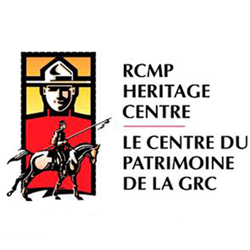Larry Burden’s This Day In The RCMP

The achievements and contributions of the Force have been built upon the individual contributions of many past Veterans. These contributions have largely been forgotten.
Veteran Sgt. Larry Burden ( #35982) served in “E” Division for 20 years has spent over ten years researching and summarizing these achievements by specific date. Nearly every day, Larry sends out an email message with a selection from his work in progress manuscript “This Day In The RCMP” to individuals interested in these historical notes.
In an effort to share his research to a large group, Larry has agreed to permit us to develop a webpage on our website. Each webpage will post Larry’s historical notations over the past week.
If you wish to contact Larry Burden or provide additional information about his research, please email him at larryburden8@gmail.com.
January 29
1941 – #13375 Constable Brian Patrick Barry O’Callaghan while serving as a Private in the Number 1. Provost Company in England was granted a testimonial from the Royal Canadian Humane Association, for saving the life of Maurice I. Henning who was drowning in the Harmon River on near Nampa Alberta on January 29th 1941. Constable O’Callaghan joined the Provost Company in the thirteenth draft in October 1941.
1985 – New Brunswick Premier Richard Hatfield found not guilty in provincial court in Fredericton NB of possession of marijuana. The drug was discovered by #25087 Cpl.Eugene Hoffman in his personal suitcase that was on the Queens plane during Royal Visit security search Sept 25th in Moncton NB. Premier Hatfield claimed it was planted.
January 30
1911– # 3948 Sergeant Stafford Eardley Aubyn Selig age 31, died of an unknown infection on Herschel Island, NWT.
1932 – Honour Roll Number 51.

Photograph of the RCMP Cenotaph at “Depot” Division with the name of Constable Edgar Millen (Reg#9669) (Source of photo – Sheldon Boles).
#9669 Constable Edgar Millen age 31 was killed near Rat River, N.W.T., while attempting to apprehend Albert Johnson.
Cst. Millen was a casualty in one of the most famous manhunts in Canadian History; the hunt for “the Mad Trapper of Rat River”. By the time the ordeal was over a policeman and a soldier would be shot and wounded, Cst. Millen would be killed and the murderer tracked for six weeks through the bush aided by a WW1 flying Ace.
Trapper Albert Johnson was a reclusive American who had appeared in the Yukon in 1927 and had his first encounter with the policeman he would later kill when he arrived in Fort McPherson in July 1931. Johnson brought attention to himself because of his elusiveness and eccentric behavior and the fact that he was spending enormous amounts of cash. Constable Edgar Millen the commander of Arctic Red Detachment decided to check out the newcomer and after an interview that consisted mostly of vacant stares and few words; Millen advised Johnson that if he was going to trap in his detachment area he would require a trapping licence. It didn’t take long for Johnson to scare off the locals and in December local Indians came to the detachment and reported that Johnson had destroyed their traps and threatened to kill them if they didn’t leave his trapping area.
On December 26th Cst. Millen then sent his two men the eighty miles to Johnson’s cabin to investigate. After constables #10211Alfred Wheldon “Buns” King and Special Constable Joseph Bernard arrived two days later, they found a fortified cabin that was dug three feet into the ground and equipped with peep holes to shoot out of. Even though smoke was coming out of the cabin, Johnson refused to answer the door, so the men decided to travel 80 miles to the RCMP Headquarters in Aklavik and obtain a search warrant. Inspector #5700/O.209 Alexander Neville Eames issued the warrant and then ordered Constables #10269 G. Robert McDowell and Special Cst. Lazarus Sittichiulis to return to the scene with the other two men and arrest Albert Johnson.
The four men arrived back at the fortified cabin on December 31st, but the trapper still refused to respond to their calls. When Cst. King approached the cabin door to serve the Search Warrant, Albert Johnson shot him in the chest through a peephole. As the other three men opened fire on the cabin they managed to pull their wounded comrade to safety and then rushed him to the All Saints Mission back in Aklavik and miraculously he survived.
On January 5th, 1932 eight policemen and seven trappers returned to the scene armed with guns and 20lbs of dynamite and after a 15 hour siege involving heavy gunfire and blowing off part of the cabin roof Albert Johnson was still alive and shooting. Running low on supplies the men decided to return to Aklavik and came back eleven days later with a posse of 21 men. Upon their arrival the police discovered that Johnson had fled the scene and was headed towards the Alaskan border. Refusing to be deterred, Inspector Eames equipped a squad of four men led by Constable Millen with enough supplies to last nine days and with the thermometer reading 50 below zero they set out to pursue the fugitive. When the men caught up to Johnson a gunfight occurred and Cst. Millen was killed by a shot from Johnson’s high-powered rifle.
After Millen’s body was returned, the manhunt became a national story and the search for the Mad Trapper of Rat River gained a new intensity. Canada’s war hero Wilfred “Wop” May, the ace who had challenged the Red Baron in France was brought in from Edmonton over 1000 miles away with his Bellanca airplane, and hired to lead an aerial search. With the bush pilot’s assistance the posse closed in on Johnson on February 17th and in the shootout that followed Albert Johnson was riddled with bullets.
The story of the hunt for Albert Johnson was made into a best selling book “The Death of Albert Johnson, Mad Trapper of Rat River”. Even Hollywood got in on the act when in 1981 they released the movie “Death Hunt” starring Lee Marvin as Millen and Charles Bronson as Albert Johnson. Using poetic licence they promoted Millen to sergeant and subtitle the movie as “the saga of two rivals who clash as enemies and triumph as heroes”, The movie tells how a reluctant Lee Marvin is forced to pursue Charles Bronson in the manhunt across the Canadian wilderness.
Edgar Millen a native of Belfast Ireland was initially buried in Aklavik but on February 29, 1932 he was re-interred with full military honours at the Beechmont Cemetery in Edmonton Alberta.
1964 – A terrorist group calling itself “Comité révolutionnaire du Québec” raid the armoury in Montreal and steal weapons and ammunition.
1966 – The Canadian Government announces that over 100,000 Canadians aged 69 are now eligible for $75 Old Age Security pensions. This is welcomed news to retired members of the Force who are receiving meager pensions for their service in the RCMP and the RNWMP
1970 – At approximately 11:00 p.m. #18044 Corporal William R. Colvin was conducting a routine patrol on the Trans-Canada Highway near Regina when he encountered a 16-year-old boy hitchhiking.
When he questioned the lad, he discovered that he was a runaway from Hope, British Columbia. He had the boy get in his car and was returning him to Regina when suddenly the boy produced what Colvin though was a .45 revolver and pointed at him and ordered him to stop the car. Instead of easing the car to a stop Cpl. Colvin slammed on the brakes while traveling at over 60 miles per hour and wrestled the gun from the youth’s hand. In recognition of his courage and determination in safely disarming the assailant Cpl. Colvin was awarded the Commissioners Commendation for Bravery.

1971 – Often stories of heroism seldom get told let alone recognized with an award. One such incident involving #25593 Constable Brian Shouldice of Frobisher Bay, NWT was noted by Mr. Justice W.G. Morrow in and article he wrote in 1975, entitled “Courage in Red”. In his article he commended a number of constables he had encountered in his career as a judge including Cst. Shouldice who had responded to complaint of a break and enter. When he walked into the house he was confronted by an intoxicated man who was lying on the floor pointing a rifle at him and threatening to kill him. Cst. Shouldice quickly removed himself from the house and then set up surveillance. Instead of confronting the drunken man left the building with the rifle, he followed him at a safe distance and when the gunman tripped and fell, Shouldice rushed him and grabbed the .303 hunting rifle. When he examined it, he discovered that the bolt was missing. Even though the weapon was harmless, Cst. Shouldice had no way of knowing that. The judge noted that individual courage and restraint that he demonstrated, exemplified the professionalism of many members of the Force who deal with situations like this on a regular basis.
February 1
1883– Members of the NWMP have had to endure severe weather conditions in the course of their duties. But this day in Prince Albert, Saskatchewan sets a new record when the mercury drops to a bone chilling -56.7 degrees Celsius.
1915 – Like so many of he peers, #5685 Cpl. Michael O’Leary obtained a discharge from the NWMP so he could serve in WW1 with “A” Company of the Irish Guards. On this day while fighting at Cuinchy, France, 26 year old Lance-Corporal O’Leary rushed a German machine gun position and killed five Germans who were holding the first barricade. Then he attacked a machine gun position 60 yards further on killing three more enemy soldiers and taking two others prisoner.
His valour resulted in him being awarded the Victoria Cross and a promotion to Sgt. and then he was transferred to the Connaught Rangers and promoted, to 1st. Lieutenant. His heroism was again recognized when he was serving in Salonika and he was awarded the Russian Cross of St. George.

O’Leary’s image and reputation was used to recruit Irishmen into the Army. They even tried to use his father as a recruiter but canned him after only one speech when speaking in the Inchigeela district, he urged the young men to join the British army stating; ‘If you don’t’, he told them, ‘the Germans will come here and will do to you what the English have been doing for the last seven hundred years’.”
After ending the war as a Captain he eventually returned to Canada with his wife Margaret Hegarty, where he became an Inspector in the Ontario Provincial Police. In 1925 they went to Michigan, USA, and he joined the Michigan Central Police. Eventually he returned to England. In WW2, he served with the Middlesex Regiment and retired at the end of the war as a Major. He died in England in 1961 and is buried in Paddington Cemetery.
1920 – The Royal North-West Mounted Police becomes the Royal Canadian Mounted Police and assumes the responsibility of enforcing federal laws in all nine Provinces and both territories, instead of only the four western provinces. The new Force absorbs the Dominion Police, which had guarded government buildings and enforced federal statutes since 1868. The headquarters of the new Federal Police Force is moved to Ottawa while training stays in Regina. The size of new Force is set at 2,500 men.
1924 -– Inuit murderers Alikomiak and Taimagana were hanged at Herschel Island NWT for the murder of Cpl. W.A. Doak and two other men on April 21, 1922. The pair who had been previously convicted of murdering four Inuit in 1921 committed the murders while they were being held in custody. Previously the government had been lenient on the sentencing of Inuit murderers, by having death sentences commuted to life in prison. In this case it appears that their fate was sealed before the trial for their graves had been dug and their defense counsel stated publicly “that the law should take its course and those Eskimos found guilty of murder should be hanged in a place where the natives will see and recognize the outcome of taking another life.”
1935 – International Pictures release the movie “SILENT CODE” staring Kane Richmond as RCMP Corporal Jerry Hale a Mountie who is reassigned to a district he had been run out of earlier forcing him to leave his girl friend and be accused of murder.
1940 – # 12647 Constable Hans William Metcalfe was promoted to Lance Corporal for his bravery in attempting to arrest an insane man in the Yukon. Metcalfe served from 1935 to his death while serving as a Corporal in Swift Current Saskatchewan on May 21, 1951.
1961 – 20th-Century Fox releases the movie “The Canadians” in DeLuxe Color. The hero of the flick is Inspector William Gannon starring Robert Ryan who has to deal with the problems created when the Sioux come to Canada. He lets then stay if they promise to be peaceful, but cowboys kill all inhabitants of one of their villages and create problems for the Mounties.

1962 -#14037 Staff Sergeant Major J.E. Fernand Roy received a commendation for an Excise Act investigation in which resulted in the seizure of an illicit still and 800 gallons alcohol. He served from 1941 to 1964 & died on October 3rd 1997 at St Laurent, Que.
February 2
1935 – Ambassador Pictures release the movie “Northern Frontier” staring Kermit Maynard as Sgt. Mack MacKenzie. In the movie, the RCMP are trying to catch a gang of counterfeiters. Our hero Sgt. McKenzie goes undercover after arresting an arriving agent, and using his letter of introduction to get into the counterfeiting gang. His cover is blown and he receives unexpected help from one of the gang members.
1942 – Constables #13702 Cst Lloyd Stewart and # 14145 Cst Bruce Boyes joined the 10th reinforcement draft to the WWII Provost Corps.
1952 – Commissioner Nicholson approves the recommendation for the music for RCMP’s official “Regimental March Past”. The music written by Dr. Charles O’Neil of the Toronto Conservatory of Music was chosen from three different compositions that were judged by Sub-Inspector E.J. Lydall the RCMP’s director of music and Flight Lieutenant E.A. Kirkwood, Supervisor of Music for the Royal Canadian Air Force and Mr. Carman Milligan, organist for the St. Andrews Presbyterian Church in Ottawa. In November of 1952 the Force applied for and received a certificate of Copyright (file# 6076, serial# 99865) on the music entitled “The Royal Canadian Mounted Police March”
1965 – Honour Roll Number 129.

Photograph of Constable David Brian Robinson (Reg.#20598).
#20598 Constable David Brian Robinson age 25 died in hospital at Saskatoon, Saskatchewan, from an accidental bullet wound, inflicted by another member who was cleaning a service revolver, while preparing for an inspection.
On the afternoon of January 27, 1965, Constables #22731 Louis “Bud” Cottini, Terry Lavereau and David Brian Robinson were cleaning their revolvers in the detachment barracks at Humboldt, Saskatchewan. Nobody knows how it occurred, but as the trio was chatting, Constable Lavereau’s loaded gun fired and hit Robinson in the chest. He was rushed to the hospital in Humbolt where doctors discovered that he was bleeding internally from the bullet wound to his liver. After receiving 11 pints of blood Cst. Robinson was airlifted to University Hospital in Saskatoon but he died four days later. The inquest ruled that his death was accidental and no disciplinary action was taken against Cst. Lavereau.
David Brian Robinson had six years’ service was buried in the RCMP Cemetery. Seven months later his wife gave birth to their second child, the same day Terry Lavereau resigned form the RCMP.
1976 – The Detachment in Hay River Alberta catches fire and burns to the ground leaving #21351 Sgt Carl A. Lentowicz without a detachment to command.
1979 – Honour Roll Number 159.

Photograph of Constable Mark McLachlan (Reg.#31962).
#31962 Cst. Mark Percy McLachlan age 27 was killed in a motor vehicle collision 90 miles northwest of Whitehorse, Yukon.
Cst. McLachlan had spent most of the day in court in Whitehorse and was returning to his detachment in Mayo around 3:30 p.m. when his police car collided head on with ha a truck killing him instantly. The single five-year member of the Force was buried beside his father, former Staff Sergeant Percy McLachlan in the Garry Memorial Park in Winnipeg Manitoba.
1995 – #27307 M.C. Petersen and #33362 Cst. Thomas J. Leonars with 4 civilians received commendation for rescue of man trapped in submerged car in Sooke Basin
February 3
1914 – #4751 Constable Edward R. Clark’s stint as the NCO in charge of the Town Station Detachment at Maple Creek, Saskatchewan did not go well. The man was brought up on charges by Superintendent Horrigan, who convicted him in Service Court on charges that lost one handcuff key. After finding him guilty the officer confined him to barracks for seven days and ordered him to pay 20 cents for a new key.
1916 – Fire destroys the wooden Centre Block of the Parliament Buildings in Ottawa, killing seven people. The Parliamentary Library is saved by a quick thinking clerk, who closes the iron doors. The tragedy is widely blamed on German wartime saboteurs. A new building, containing the Commons and Senate, is rebuilt of stone in the Gothic revival style, and completed in 1920.

Photograph of members of the RCMP Number 1 Canadian Provost Corps (Source of photo – Ric Hall’s Photo Collection).
February 4
1972 – Constable Dale Edward Dickrow earned a Commanding Officers Commendation after he removed a bomb from a public locker in the Vancouver International Airport.
1988 – #37945 Constable L.J.B. Beck nee Brown revived a prisoner in cells who had stopped breathing by using CPR and was awarded the Meritorious Certificate from the Most Venerable Hospital of St John of Jerusalem.
1993 – #31859 / O. J.E.G. Rochette rescued stranded child from cliff side near Vedder Crossing, B.C.


 February 2, 2017
February 2, 2017 






